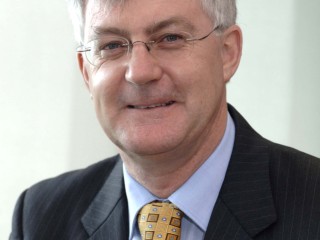 Delivering his first public speech since becoming head of the Federal Treasury recently, Dr Martin Parkinson has strongly disputed the ‘temporary high-dollar’ theory which has been popularly espoused in economic circles.
Delivering his first public speech since becoming head of the Federal Treasury recently, Dr Martin Parkinson has strongly disputed the ‘temporary high-dollar’ theory which has been popularly espoused in economic circles.
The new Treasury Secretary told a gathering of the Australian Business Economist Group in Sydney last week that the national economy is facing sustained strength in the dollar, not a short-term spike.
“This high dollar will continue such that it will permanently change the Australian economy and its makeup,” he predicted.
Dr Parkinson said the A$ was strengthening in line with the national terms of trade, which recently hit their highest point in 140 years and are likely to come off only slowly, falling by around 20 percent over the next 15 years.
The 2011-12 Federal Budget was constructed on the premise of an A$ value at about US$1.07, and the Reserve Bank used the same assumption in its recent economic and inflation forecasts released on May 6, Dr Parkinson said.
Many investors, analysts and business commentators have assumed that the current high value of the A$ would be a passing phase, with the currency likely to dip below parity in the near to medium-term. That scenario has been based to a large extent on the Chinese economy weakening following a fall in demand for Australia’s mineral resources, thereby also undermining the value of the dollar.
Dr Parkinson’s views directly challenge this ‘temporary’ view.
“The implications of a sustained increase in the terms of trade and a persistently high exchange rate are significantly different to those of a temporary shock — particularly for the structure of the economy,” he told the ABEG gathering.
“Most Australian businesses are well equipped to deal with short-term volatility of the exchange rate. But what we are dealing with now is a very different type of event —not a temporary appreciation, but a sustained shift. This will challenge a number of existing business models,” he said.
Inevitably, this would see calls for support for export-focussed producers that are suffering from a lack of competitiveness due to a ‘temporarily’ high exchange rate, Dr Parkinson said.
“Higher resource prices will see capital and labour shift towards the mining sector, where they are more valuable. This shift will be facilitated by the appreciation of the exchange rate, which shifts domestic demand towards imports and reduces the competitiveness of exports and import-competing activities.”
The manufacturing, agriculture and other trade-exposed sectors that are not benefiting from higher commodity prices would come under particular pressure, but all sectors would be affected, he said.
While the mining and related sectors can be expected to continue to grow – drawing resources from the rest of the economy – they will be overshadowed by the longer-term shift towards the services sector.
This change to the Australian economy – its structural evolution – reflected a prolonged shift in our comparative advantage that began in the second half of the 20th century, as rapidly industrialising Asian nations emerged as labour-abundant competitors, Dr Parkinson said.
“Our evolution is common to the economic development of virtually all advanced economies, including those in Asia,” he said.



HAVE YOUR SAY